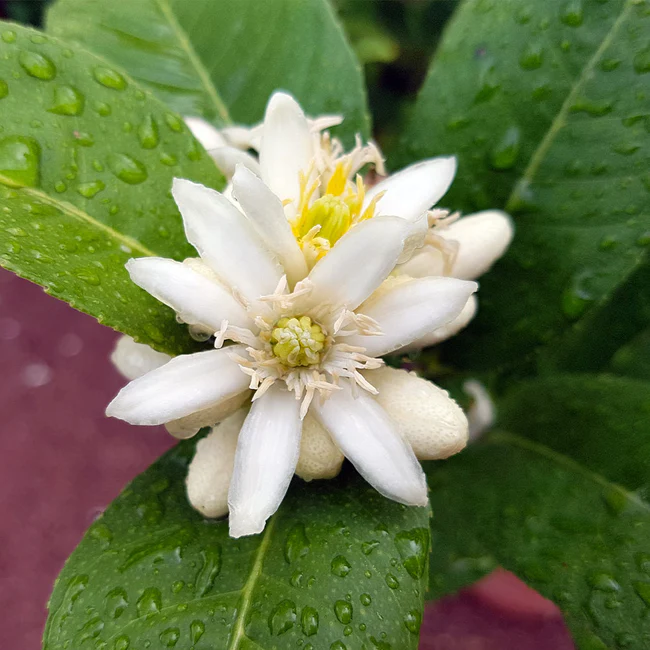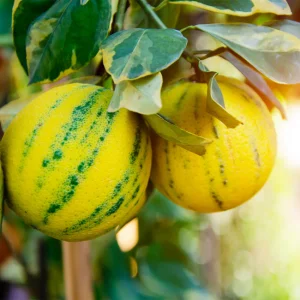This post contains affiliate links. If you buy something from one of our links we may earn a commission. Thanks
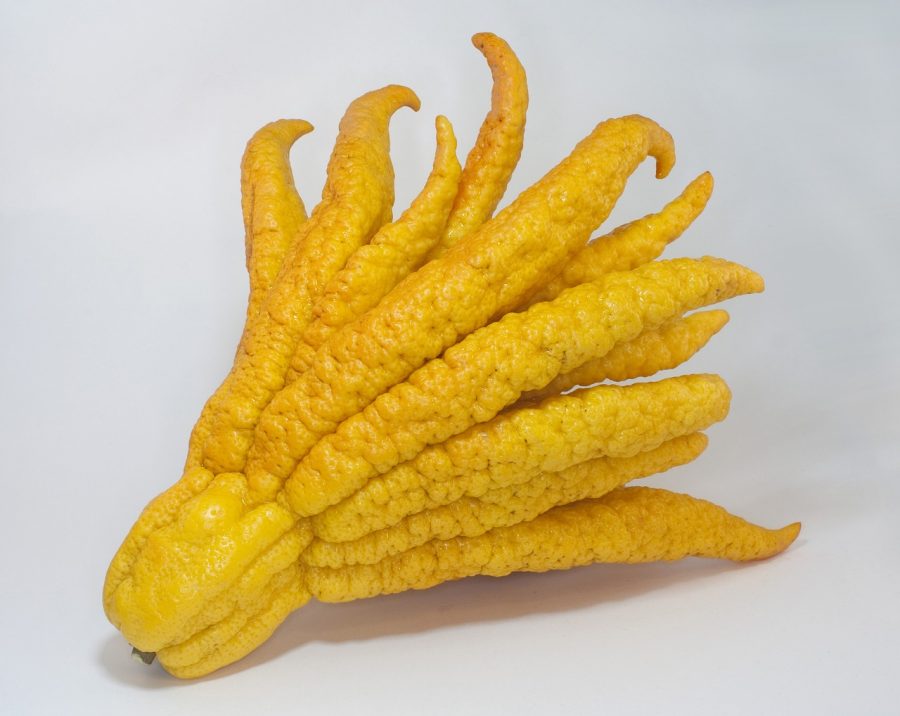
Buddha’s hand is a unique and exotic citrus fruit that’s both fragrant and visually stunning. With its gnarled fingers and sweet-smelling zest, it’s no wonder that this unusual fruit has become a popular addition to indoor gardens.
Growing Buddha’s hand indoors requires a well-draining soil mix, a pot with adequate drainage, and a sunny spot or grow light to provide bright light. Maintain a consistent watering schedule, allowing the top inch of soil to dry before watering again. Fertilize monthly with a balanced fertilizer, and ensure a temperature range of 65-75°F with moderate humidity.
But for those who are new to growing plants, the prospect of growing Buddha’s hand indoors may seem daunting. That’s why we’re here to share our expertise on how to successfully cultivate this fascinating fruit.
Whether you’re an experienced grower or just starting out, the tips and tricks in this guide will show you how to grow Buddha’s hand indoors with ease. So, grab your potting soil, and let’s get started on growing this beautiful and aromatic plant!
A Brief History Of Buddha’s Hand
Buddha’s hand is a type of citrus fruit that’s native to Southeast Asia. Its scientific name is Citrus medica var. sarcodactylis. It’s believed to have been introduced to China and other parts of Asia by Buddhist monks over 2,000 years ago and has since become an important part of traditional and religious ceremonies.
The fruit which resembles a human hand is often used as a symbol of good fortune, wealth, and happiness and is considered to be a sacred offering in many Buddhist temples. The fruit is a traditional gift during Chinese New Year.
Citrus medica var. sarcodactylis, or the fingered citron, is an unusually-shaped citron variety whose fruit is segmented into finger-like sections, resembling those seen on representations of the Buddha. Wikipedia.
Benefits of growing Buddha’s hand indoors
Growing Buddha’s hand indoors has several benefits. Firstly, it’s a great way to enjoy the fragrant aroma of the fruit all year round, which is believed to have a calming effect. It makes a fantastic natural air freshener.
Secondly, growing Buddha’s hand is a great way to bring a touch of exotic beauty to your home, as this exotic fruit’s unusual appearance makes it a conversation starter. The yellow fruits can also brighten up your home interior.
Additionally, growing Buddha’s hand indoors is relatively easy, making it a great choice for new gardeners or those with limited space.
Lastly, growing your own Buddha’s hand can also save you money, as the fruit can be expensive to purchase at the store. With its sweet aroma, beautiful appearance, and ease of growth, growing Buddha’s hand indoors is a great choice for anyone looking to bring a touch of the exotic to their home.
What is Buddha’s hand?
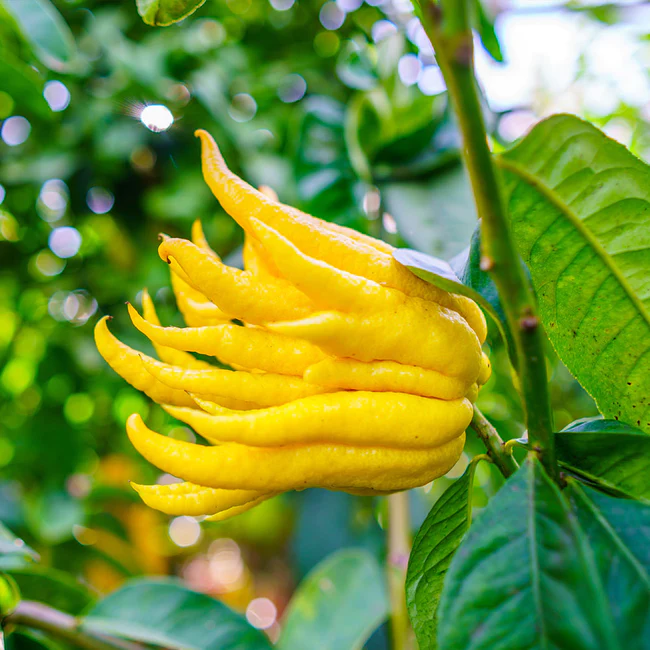
Buddha’s hand is a type of citrus fruit that is recognized for its unique appearance. Unlike other citrus fruits, Buddha’s hand is void of any flesh or juice and instead consists of only a gnarled mass of finger-like segments. Each segment of the buddha’s hand citron trees fruit is covered in a thin layer of zest that is highly fragrant and flavorful.
Characteristics
The Buddha’s hand fruit is large, typically measuring around 10-20 cm in length and 5-15 cm in diameter. It has a bright yellow, lemon-like appearance and smooth skin. The fruit is also known for its sweet aroma and flavor, which makes it an ideal ingredient for adding to recipes, fragrancing a room, or making perfumes and candles.
Buddha’s hand citron tree is a small tree and a slow-growing plant that requires well-draining soil, adequate light, and moderate humidity.
With the proper care, a Buddha’s hand plant can live a long life and produce fruit regularly often in its first year.
So, whether you’re growing it for its fragrance, beauty, or taste, Buddha’s hand is a unique and rewarding choice for indoor gardening.
How to grow Buddha’s hand indoors
Growing Buddha’s hand indoors is a fun and rewarding experience. With a little patience and attention to detail, you can enjoy the sweet aroma and unique beauty of this exotic fruit in your own home.
In this section, we will explore the key factors that you need to consider when growing Buddha’s hand indoors, including choosing the right pot, soil requirements, watering needs, light requirements, temperature needs, and humidity requirements.
Choosing the right pot
When choosing a pot for your young tree, it’s important to select one that is both spacious enough to accommodate the plant’s root ball and has drainage holes at the bottom to prevent water from pooling at the base of the plant.
A clay or terracotta pot is a good choice, as it will help regulate the soil’s moisture levels.
Soil requirements
Buddha’s hand plants prefer well-drained soil that is rich in organic matter. A commercially available potting soil is a good choice, or you can create your own blend by mixing equal parts of perlite, vermiculite, and peat moss.
Watering needs
These plants prefer moist soil but they must also have good drainage. Buddha’s hand plants prefer consistent moisture levels, so it’s important to water your plant regularly. But don’t overwater your plant.
The best way to water is to allow the top inch of soil to dry out before watering, then water thoroughly until excess moisture drains from the bottom of the pot.
Light requirements
Buddha’s hand plants require bright light to thrive. A sunny windowsill is ideal, but like most citrus plants this tree loves being in full sun.
You can move it outdoors during the summer months so it gets plenty of direct sunlight but remember to bring it back in before the weather turns cold.
Buddha’s hand is not frost tolerant and should not be kept at temperatures below 40°.
Temperature needs
Buddha’s hand plants prefer a stable temperature of around 65-75°F, with no major fluctuations. Avoid placing your plant near cold or drafty windows or doors.
Humidity requirements
Buddha’s hand plants prefer a moderate humidity level of around 40-60%. You can maintain the ideal humidity level by placing a tray of water near your plant or using a humidifier. With the right combination of light, water, temperature, and humidity, your Buddha’s hand plant will grow and produce fruit for many years to come.
Tips for caring for Buddha’s hand indoors
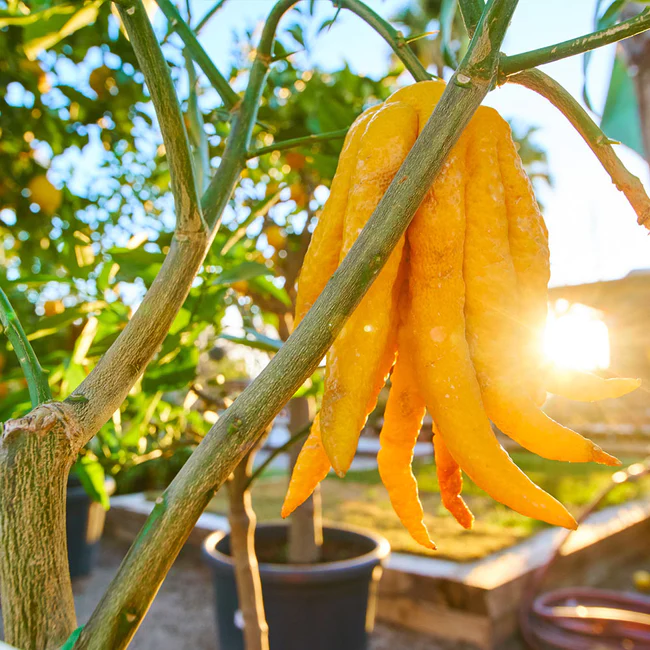
Growing Buddha’s hand indoors is a great way to enjoy the sweet aroma and exotic beauty of this unique fruit.
To ensure that your plant thrives, it’s important to give it the proper care and attention it needs. In this section, we will cover the key tips for caring for Buddha’s hand indoors, including pruning, fertilizing, pest control, and repotting.
Pruning
Pruning your Buddha’s hand plant regularly will help it maintain its shape and encourage healthy growth.
Cut back any dead or damaged branches to promote the growth of healthy, new shoots. Prune your plant in the spring to encourage new growth and remove any yellow or dead leaves.
You can prune or pinch back stray shoots moderately in early summer and throughout the growing season to help shape the tree.
Fertilizing
Fertilizing your Buddha hand citron plant will help it grow strong and healthy. Use a balanced fertilizer every two to four weeks, following the instructions on the product label. Avoid over-fertilizing, which can lead to excess growth and damage to the plant.
Pest control
Buddha’s hand plants are relatively hardy and are not prone to many pests, but it’s important to keep an eye out for any signs of infestation.
Common pests include aphids, mealybugs, and spider mites. If you do encounter a pest problem, use a natural pest control solution, such as neem oil, to keep your plant healthy and free from harm.
Repotting
Repotting your Buddha’s hand plant every two to three years will give it the space it needs to grow and promote healthy root development.
When repotting, use a large pot that is 2-3 inches wider than the previous pot. For best results add fresh potting soil to ensure adequate drainage. With the right care, your Buddha’s hand plant will continue to grow and thrive for many years to come.
Common problems with growing Buddha’s hand indoors
Growing Buddha’s hand fingered citron indoors can be a challenging but rewarding experience. However, as with any indoor plant, there are common problems that can arise.
In this section, we will discuss some of the most common problems with growing Buddha’s hand indoors, including lack of flowers, leaf yellowing, stunted growth, and diseases.
Understanding these issues and how to address them will help ensure that your Buddha’s hand plant thrives and produces sweet-smelling fruit.
Lack of flowers
If your Buddha’s hand plant is not producing flowers, it may be due to a lack of adequate light or incorrect temperature levels. Ensure that your plant is getting enough light, and make sure the temperature in your home is consistent and within the ideal range of 65-75°F.
Leaf yellowing
Leaf yellowing can be caused by a variety of factors, including over-watering, lack of nutrients, or high levels of pollutants in the air. Make sure you’re watering your plant correctly, fertilize it regularly, and keep the air in your home clean to prevent leaf yellowing.
Stunted growth
Stunted growth can be caused by several factors, including a lack of adequate light, water, or nutrients. Make sure your plant is getting enough light, water, and nutrients, and consider repotting it if it has outgrown its current pot.
Diseases
Buddha’s hand plants are relatively hardy, but they can still be prone to certain diseases, such as root rot and fungal infections.
If you notice any signs of disease, such as wilting, discoloration, or an unusual smell, isolate the infected plant and consult a horticulturist for advice. With the right care, your Buddha’s hand plant will continue to grow and thrive for many years to come.
Insect pests
Although Buddha’s hand plants are relatively hardy, they can still be susceptible to insect pests, such as aphids, mealybugs, and spider mites. If you notice any signs of infestation, such as sticky leaves or small, crawling insects, take action to control the problem immediately.
Treatment
There are several natural and safe treatments you can use to control insect pests on your Buddha’s hand plant. One effective solution is to use neem oil, which is a natural pesticide that will not harm your plant or the environment.
Another option is to use a solution of soap and water, which you can spray directly on the affected leaves to kill the pests. Whichever treatment you choose, make sure to follow the instructions carefully and repeat the treatment as necessary to control the problem.
How to Use and Eat Buddha’s Hand
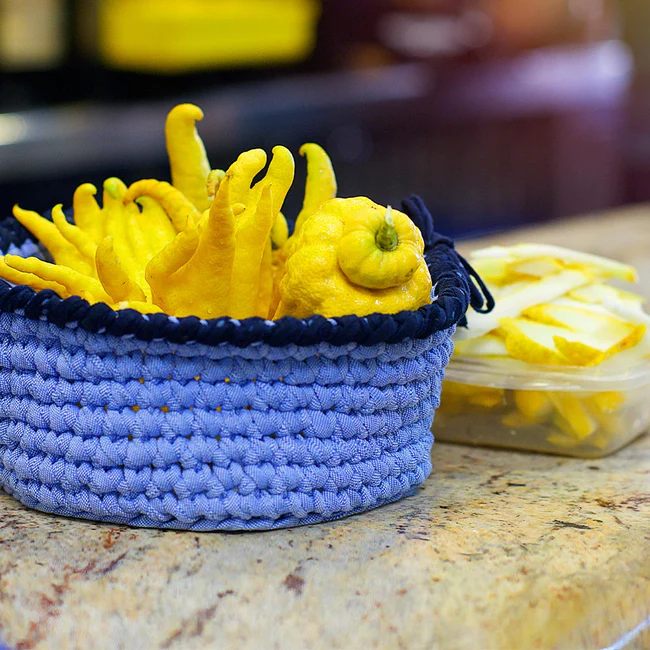
Buddha’s hand is not only a beautiful and unique indoor plant, but it is also a versatile ingredient with a range of uses in cooking and perfumery.
The citrusy scent of the fruit can be used to flavor syrups, candies, and baked goods, while the zest can be used in marinades, sauces, and drinks. The fruit can also be used in traditional Chinese and Japanese medicines to promote wellness and relaxation.
Eating Buddha’s Hand
Buddha’s hand fruit is edible, but it is typically used for its zesty fragrance rather than its flavor. To use the zest, carefully peel away the outer layer of the fruit using a zester or a sharp knife, being careful not to include any of the white pith, which is bitter.
The citrus peel can be used to add flavor to a wide range of dishes, from baked goods to sauces and marinades.
Uses of Buddha’s Hand
In addition to being used as a zesty ingredient in cooking, Buddha’s hand can also be used in perfumery to add a fresh and citrusy scent to candles, soaps, and other fragrance products. The fruit can also be used in traditional Chinese and Japanese medicines to promote wellness and relaxation.
Storing Buddha’s Hand
To store Buddha’s hand fruit, place it in a cool, dry place, such as a pantry or a refrigerator. It will keep for several weeks, provided it is stored correctly and away from any sources of heat or moisture.
To keep the fruit fresh for as long as possible, wrap it in plastic wrap or store it in an airtight container.
To store Buddha’s hand fruit, place it in a cool, dry place, such as a pantry or a refrigerator. It will keep for several weeks, provided it is stored correctly and away from any sources of heat or moisture. To keep the fruit fresh for as long as possible, wrap it in plastic wrap or store it in an airtight container.
In conclusion, Buddha’s hand is a versatile and flavorful ingredient that can be used in a wide range of dishes and products.
Whether you’re looking to enjoy the sweet scent of the fruit or add a unique flavor to your cooking, Buddha’s hand is a valuable addition to your kitchen or perfumery collection.
can it be candied
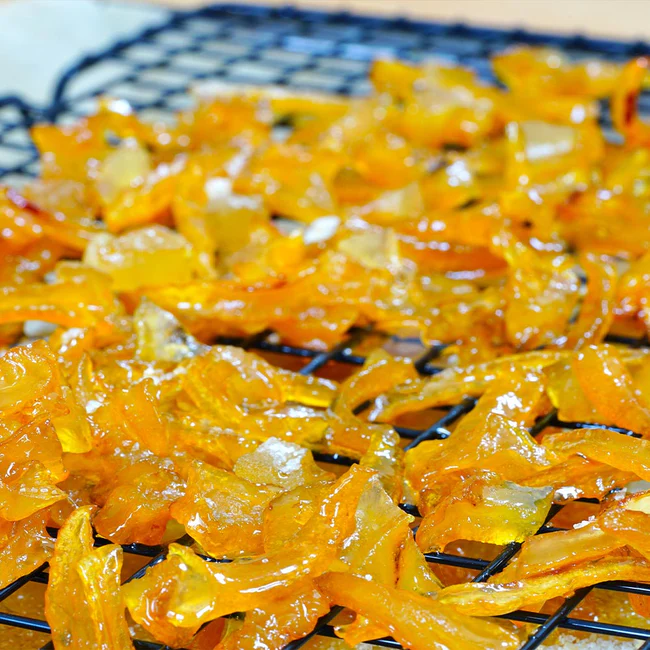
Yes, Buddha’s hand can be candied. Candying is a process in which the fruit is preserved in sugar syrup to create a sweet and flavorful treat.
To candy Buddha’s hand, you will need to peel the zest, blanch it in boiling water, and then simmer it in a mixture of sugar and water until it becomes translucent. The candied zest can then be used as a sweet garnish or added to baked goods for flavor.
Buddha’s Hand FAQs
The enigmatic Buddha’s hand, with its finger-like protrusions, is more than just a conversation starter.
It’s a connection to ancient traditions, a fragrant addition to your home, and a journey into exotic citrus cultivation.
Whether you’re seeking to explore its culinary potential or simply enjoy its unique aesthetics, growing Buddha’s hand indoors can be an engaging endeavor.
But, like any botanical venture, it prompts questions—about its soil preferences, light requirements, watering regimen, and common problems one might encounter.
As you embark on this horticultural adventure, having answers to these common queries can pave the way for a fruitful and enjoyable growing experience.
Q. What is the ideal soil mixture for growing Buddha’s hand indoors?
A. A well-draining soil rich in organic matter is ideal. A mix of perlite, vermiculite, and peat moss, or a commercial citrus soil mix can be used.
Q. How much light does a Buddha’s hand tree need?
A. Buddha’s hand requires bright light, so placing it near a sunny windowsill or under a grow light is essential for its growth and fruit production.
Q. How often should I water my Buddha’s hand tree?
A. Watering should be consistent, allowing the top inch of soil to dry out before the next watering to prevent over-watering and root rot.
Q. Are there any common pests or diseases I should be aware of?
A. Common pests include aphids, mealybugs, and spider mites. Neem oil or soap-water solution can be used as a natural remedy.
For diseases, ensuring good air circulation, proper watering, and avoiding leaf wetness can help prevent fungal infections.
Final thoughts on growing Buddha’s hand indoors
Growing Buddha’s hand indoors can be a fun and rewarding experience that adds a unique touch of beauty and fragrance to your home. With the right pot, soil, light, temperature, and humidity requirements, your Buddha’s hand plant can thrive and provide you with fresh fruit for years to come.
With proper care and attention, this striking plant can be a source of pride and enjoyment for years to come.
The fruit can be used in a variety of ways to add flavor and fragrance to your cooking. Whether you’re looking to enjoy the sweet scent of the fruit or add a unique flavor to your dishes, Buddha’s hand is a plant that is well worth growing in your home.
Summary of key points
In this guide, we have covered everything you need to know about growing Buddha’s hand indoors, including its history, benefits, and characteristics. We have also provided detailed information on how to grow, care for, and troubleshoot common problems with your Buddha’s hand plant.
Finally, we discussed the uses of Buddha’s hand in cooking and perfumery and provided tips on how to store and use the fruit.
Encouragement to give it a try
If you’re interested in growing a unique and fragrant indoor plant, consider giving Buddha’s hand a try. With the information provided in this guide, you can be confident in your ability to grow a healthy and thriving Buddha’s hand plant in your home.
So, why not give growing citrus trees a try today and enjoy the benefits of this amazing and unusual citrus fruit for years to come?
You can learn more about growing indoor citrus fruit trees with our complete beginners guide.

